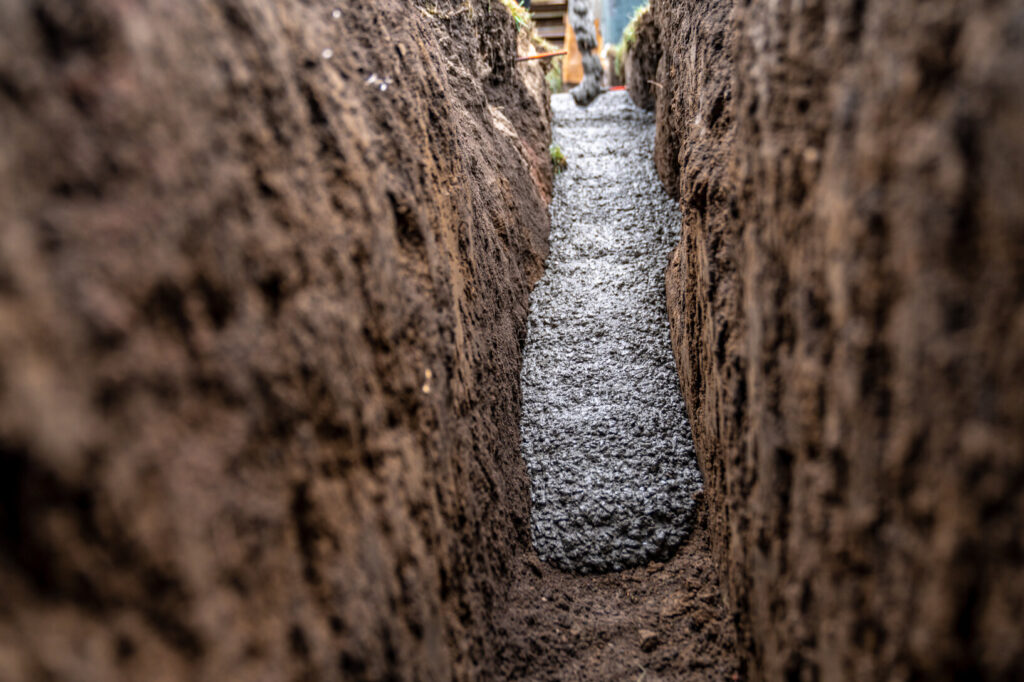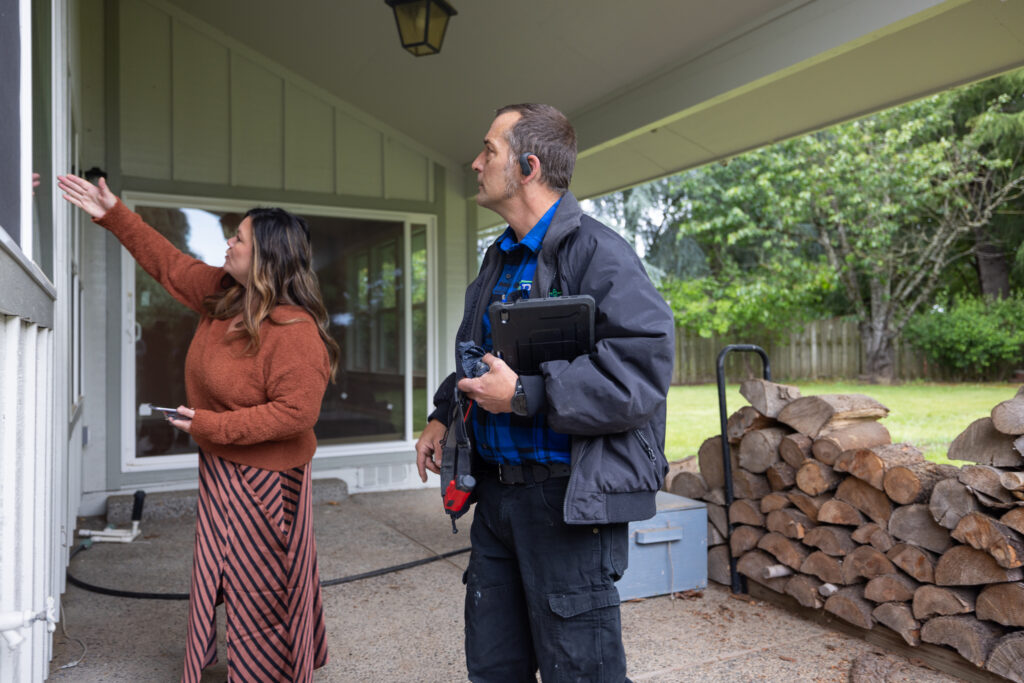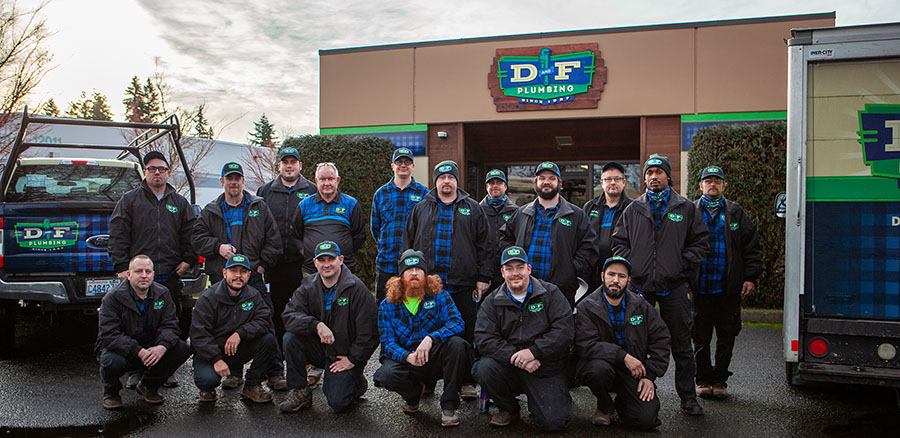Basement flooding can cause significant damage to your property. It not only affects the structural integrity of your home but can also damage personal belongings and create a breeding ground for mold. One effective solution to prevent basement flooding is the installation of a French drain system. This system helps redirect water away from your basement, keeping it dry and safe.
French drains are vital tools in managing water around your property. They consist of a trench filled with gravel or rock containing a perforated pipe that redirects water away from your home. Understanding how French drains work and their importance can help you make an informed decision about protecting your basement from flooding.
Understanding French Drains and Their Importance
What Is a French Drain?
A French drain is a trench filled with gravel or rock that contains a perforated pipe designed to redirect surface water and groundwater away from an area. This type of drainage system is particularly effective for preventing water from accumulating around the foundation of your home. By redirecting water flow, French drains help keep basements dry and reduce the risk of water damage. The perforated pipe collects water and channels it away, ensuring that water does not seep into the basement or other vulnerable areas of your home.
How French Drains Prevent Basement Flooding
French drains prevent basement flooding by providing a pathway for water to escape from around your home’s foundation. When it rains, or when snow melts, water can accumulate around your property. Without proper drainage, this water can seep into your basement, causing flooding and water damage. French drains alleviate this problem by capturing excess water in the trench and allowing it to flow away from your home. By doing so, they protect the foundation from water pressure and help maintain a dry and safe basement environment. This makes French drains an essential component for homes prone to water accumulation and flooding issues.
In many situations, homeowners ask whether a French drain will prevent water in a basement entirely. While every property is different, a properly designed French drain can dramatically reduce the amount of groundwater that reaches your foundation. By relieving hydrostatic pressure and redirecting water away from vulnerable areas, French drains are one of the most reliable long-term solutions for recurring basement moisture and flooding concerns.
Essential Components of a French Drain System
Key Parts of a French Drain
A French drain system is composed of several key parts that work together to manage water flow effectively. The main components include the trench, gravel or rock fill, perforated pipe, and a geotextile fabric. The trench is dug around the area where drainage is needed, usually along the perimeter of a foundation. The perforated pipe is placed at the bottom of the trench to collect and redirect water. Gravel or rock fill surrounds the pipe, helping to filter and guide the water into the pipe. The geotextile fabric covers the trench to prevent soil and debris from clogging the pipe and gravel.
Materials Used in French Drain Installation
Materials used in French drain installation are chosen for their durability and effectiveness in water management. The perforated pipe is typically made of PVC or corrugated plastic, both of which are resistant to corrosion and suitable for underground installation. Gravel or crushed stone with a size ranging from half-inch to one and a half inches is used to fill the trench, allowing water to flow freely into the pipe while preventing soil from clogging the system. The geotextile fabric, a crucial element, is a permeable material that covers the trench, preventing soil and sediment from entering while allowing water to pass through. These materials ensure the French drain functions efficiently and remains free from blockages, providing long-term protection against basement flooding.
Using the correct basement French drain materials plays a major role in how well the system performs over time. High-quality piping, properly sized gravel, and durable filter fabric help prevent clogs, maintain consistent water flow, and extend the lifespan of the drainage system. Selecting the right materials during installation reduces the need for future repairs and ensures reliable basement protection.
Steps to Install a French Drain
Preparing the Area
Preparing the area for a French drain installation is crucial for the system’s effectiveness. The first step involves identifying the area where water accumulation is most severe. Once this is determined, our professionals mark the path for the trench, usually around the perimeter of the foundation or the backyard. Next, we ensure all utilities are located and marked to avoid any disruptions during the digging process.
Digging the trench is the next critical step. The trench should be approximately 12 inches wide and deep enough to slope the drain pipe away from your home, ensuring effective water flow. We prioritize creating a consistent slope to guide the water efficiently towards the designated exit point. This part of the process requires precision, and our professionals use specialized tools to ensure the trench is perfectly aligned.
Installation Process
Once the trench is ready, the installation process begins with laying a layer of gravel at the bottom. This base layer provides a solid foundation for the perforated pipe and facilitates water flow. The perforated pipe is then carefully placed on top of the gravel, ensuring the holes are facing downward to capture water effectively.
After positioning the pipe, we add more gravel to cover it, creating a filtration barrier that prevents soil and debris from entering the system. The final step involves covering the trench with soil and sod, restoring the landscape to its original state. In some cases, we use a geotextile fabric to separate the gravel from the soil, further enhancing the system’s durability. This thorough and meticulous installation process guarantees a functional and long-lasting French drain system.
French drain installation in a basement may involve either an interior or exterior approach, depending on where water intrusion occurs. Interior basement French drain installation typically channels water toward a sump basin, while exterior systems intercept groundwater before it reaches the foundation. A professional assessment helps determine which option provides the most effective protection for your specific property.
Exterior French Drain Options for Basement Protection
An exterior French drain basement system is installed along the outside perimeter of the foundation. This method is designed to capture groundwater before it can seep through foundation walls or cracks. Exterior French drains are particularly effective for homes experiencing consistent water pressure against foundation walls or water intrusion after heavy rainfall.
Because exterior systems often require excavation around the home, proper planning and professional installation are essential. When installed correctly, an exterior French drain provides a proactive solution that helps stop basement flooding at its source rather than managing water after it enters the home.
Benefits of Professional French Drain Installation
Advantages of Hiring Our Professionals
Hiring our professionals for your French drain installation brings several advantages. Our team has the expertise and experience to design and install an effective drainage system tailored to your property’s specific needs. We understand the intricacies involved in measuring slopes, selecting materials, and ensuring a seamless installation process.
We use high-quality materials that provide durability and long-term performance. Our professionals are equipped with state-of-the-art tools to ensure precise excavation and placement of the drain components. This combination of expertise and quality materials results in a highly efficient drainage system that effectively prevents basement flooding and water damage.
Long-Term Benefits
Investing in a professionally installed French drain offers long-term benefits, providing peace of mind by safeguarding your property from water-related issues. A well-installed French drain reduces the risk of basement flooding, protecting your foundation and preventing costly repairs. It also helps maintain a healthier indoor environment by reducing the likelihood of mold growth and water damage.
Additionally, a properly functioning French drain can enhance the overall value of your property. Prospective buyers recognize the importance of an effective drainage system, making your home more attractive in the real estate market. By choosing a professional installation, you ensure that your French drain will perform optimally for years to come, providing reliable protection and contributing to the longevity of your home.
Will a French drain stop basement flooding completely?
In many cases, a French drain can stop basement flooding caused by groundwater buildup or poor drainage around the foundation. By redirecting water away from the home and relieving pressure on foundation walls, French drains significantly reduce the risk of water intrusion. In areas with severe water issues, combining a French drain with additional drainage solutions can offer even greater protection.
Conclusion
Implementing a French drain system is an effective strategy to prevent basement flooding and protect your home’s foundation. Understanding the benefits and installation process of a French drain can help you make an informed decision. From preparing the area to the detailed installation steps, each phase plays a crucial role in ensuring the drain works correctly. Hiring our professionals guarantees a precise and durable installation that provides long-term protection against water damage.
Our team at D&F Plumbing, Heating and Cooling is committed to helping you safeguard your home with high-quality French drain installations. Contact our Plumber in Portland, OR today to schedule an inspection and learn more about how a French drain can benefit your property. Don’t wait until water damage occurs; let us provide you with a reliable solution to keep your basement dry and your home protected.

















